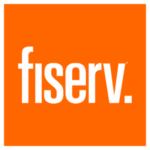 Communicator Open represents Fiserv’s latest advancement in API services. This offering provides a contemporary and standardized set of APIs compliant with Open API guidelines, designed specifically for Fiserv’s three major cores: Premier, Signature, and Precision. Unlike Fiserv’s prior API solutions, like SOA and Communicator Advantage, Communicator Open is exclusively available as a cloud-based service, significantly easing the network connectivity challenges associated with integrating these cores. Here, we’ll share the benefits of utilizing an Integration-Platform-as-a-Service (like PortX) to integrate your Fiserv core via Communicator Open, drawing from our extensive experience.
Communicator Open represents Fiserv’s latest advancement in API services. This offering provides a contemporary and standardized set of APIs compliant with Open API guidelines, designed specifically for Fiserv’s three major cores: Premier, Signature, and Precision. Unlike Fiserv’s prior API solutions, like SOA and Communicator Advantage, Communicator Open is exclusively available as a cloud-based service, significantly easing the network connectivity challenges associated with integrating these cores. Here, we’ll share the benefits of utilizing an Integration-Platform-as-a-Service (like PortX) to integrate your Fiserv core via Communicator Open, drawing from our extensive experience.
API-based connectivity platform (Communicator Open) vs. Integration-Platform-as-a-Service (PortX)
First, it’s important to note that Fiserv Communicator Open and PortX represent two distinct approaches to middleware. Communicator Open is an API-based connectivity platform that primarily exposes core banking functions and data through an API layer. It facilitates third-party onboarding and management, offering features like a developer portal and an API marketplace. However, vendor middleware generally necessitates an in-house IT staff for ongoing maintenance and while it may solve the “connect everything to the core” problem, it does not solve the “connect everything to everything problem.
In contrast, an Integration-Platform-as-a-Service (iPaaS), such as PortX, delivers a comprehensive suite of services. An IPaaS can eliminate potential limitations of a core API approach and enhance the core’s functionality in the financial institution’s technology ecosystem. Additionally, this approach extends beyond technology implementation to include ongoing maintenance, development support, and assistance with third-party onboarding. It encompasses a broader range of functionalities involved in API development, integration workflow, and banking operations. And a robust platform should also include low-code tooling that democratizes the integration process, making it accessible and manageable for a wider range of users within the financial institution (FI).
Learn more about the differences in our blog: Banking Core Middleware vs. Integration-Platform-as-a-Service (IPaaS): Why the Difference Matters for Financial Institutions
1. An IPaaS maximizes Communicator Open’s efficiency and minimizes latency
Communicator Open is exclusively hosted in Fiserv’s data center, with its API accessible via the Internet. This service is available to clients using Fiserv Premier, Signature, and Precision cores, irrespective of the core’s hosting location—whether in-house, at a third-party hosting center, or directly in a Fiserv data center. Consequently, Communicator Open customers should consider this strategy to maximize responsiveness.
Why is this important?
This is particularly important due to the real-time nature of financial transactions and the need for accurate, instantaneous data synchronization across various platforms. Latency can lead to delays in transaction processing, affecting operational efficiency and customer satisfaction. Additionally, in a heavily regulated financial industry, timely reporting and compliance are essential, and any latency can pose significant challenges. Therefore, minimizing latency is crucial for FIs to ensure effective transaction processing, regulatory adherence, and a positive customer experience.
Best Practice Recommendation:
Especially in scenarios where API call sequences are predictable, using an IPaaS like PortX is a proven approach to mitigate latency effectively. PortX can pre-call APIs at the start of a user interaction, cache responses in the cloud, and serve these responses from the cloud to ensure a fast, low-latency experience.
2. FIs need greater flexibility than to complete complex business logic
Communicator Open’s API operations are generally normalized and primarily designed for basic create, read, update, and delete (CRUD) actions. These operations simply are not intended for executing complex business logic through individual API calls.
Why is this important?
Complex business logic, which often includes intricate decision-making processes and regulatory compliance rules, cannot be adequately handled within the limited scope of standardized API operations. FIs must have the flexibility to tailor their operations to specific requirements with more sophisticated and nuanced decision-making to rapidly adapt to changing regulatory environments and evolving business needs, while maintaining seamless integration.
Best practice: Manage business logic execution externally
With Communicator Open’s normalized API operations, the execution and enforcement of business logic and rules need to occur externally. Here, an IPaaS like PortX is valuable in storing, managing, and executing business logic and rules for interactions between Communicator Open and other systems. This approach offers the flexibility and capability to handle intricate business logic and rules beyond basic CRUD operations.
3. Enhanced security presents key management complications
Fiserv has enhanced the security of Communicator Open, which is accessed via the public internet, by implementing measures beyond standard HTTPS and client ID/secret protocols. Accessing the API requires the FI to store a public key with Fiserv and use the corresponding private key when invoking the service.
Why is this important?
This advanced security approach not only heightens data protection and prevents unauthorized access but also places an additional responsibility on FIs to manage cryptographic keys efficiently. This is crucial in the financial sector, where the security of transactions and data is paramount, and any breach can have significant reputational and financial implications. As a result, while enhancing security, these measures also demand FIs to invest in robust key management systems and procedures, ensuring secure and smooth access to the Communicator Open services.
Best practice: Simplify key management
Given the complexity of managing public and private key pairs, it is advisable for FIs, especially those new to this process, to collaborate with a reputable middleware partner. PortX offers the infrastructure needed for secure storage and timely renewal of keys and correctly presenting them during API calls, thereby reducing the risk of security breaches and operational inefficiencies.
4. Adapting to JSON format in legacy systems is difficult
Fiserv’s Communicator Open marks a shift towards the JSON format, moving away from the XML schema used in its previous offerings, SOA and Communicator Advantage. This adoption of JSON aligns Communicator Open with the Open API standard prevalent in the computing industry and steers it towards the Financial Data Exchange’s (FDX) canonical data model, ensuring modern compliance and interoperability.
Why is this important?
This transition introduces challenges for FIs, particularly those with legacy systems predominantly based on XML. These institutions must now adapt their data processing and integration strategies to accommodate the JSON format. This requires technical adjustments in data parsing and potentially significant updates to existing infrastructure and training for IT staff.
Best practice: Enable seamless transformation for any data type
Since many systems in the financial services industry still operate with XML-based APIs, there’s a need to transform messages from XML to JSON for integration with Communicator Open. Again, it is an industry best practice to utilize a robust middleware layer capable of handling any data format. PortX can seamlessly transform data between XML and JSON using open-source data mapping technologies like Datasonnet.
Want to learn more about integrating with Communicator Open?
If you want to learn more about how Fiserv Communicator Open and PortX combine to speed up product innovation and system efficiency, don’t hesitate to contact us for more information and schedule a consultation. We are always happy to help and answer any questions you may have.






